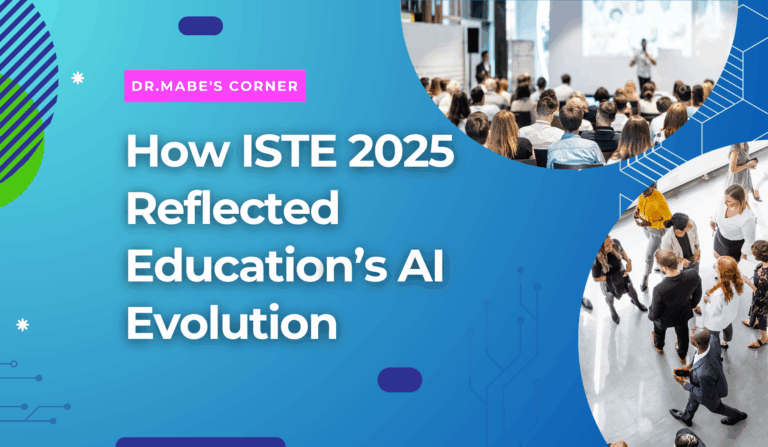As this year’s ISTE Live 25 comes to a close, I want to share what resonated with me most. I first attended ISTE in 2018. It was the first time I ever presented at a conference and I spoke about Using Principles of Successful Start-Up Companies in the Classroom. I got so much out of the other presentations I attended, I still put to use some of the things I learned that year.
ISTE Live 25 also did not disappoint. One notable difference between when I first started going to ISTE and now is the number of sessions on Artificial Intelligence. Even within the topic of AI, I noticed a shift in topics. Last year, one could find more topics on prompt engineering and this year almost none. This is likely because prompt engineering has become more accessible and commonplace among educators. What seemed novel and technical in 2023-2024 has now moved into everyday practice for many teachers.
This year more sessions on AI and critical thinking stood out. I think this represents the change in focus of many educators I have spoken to. It is also good timing considering Time Magazine’s recent story, “ChatGPT May Be Eroding Critical Thinking Skills, According to a New MIT Study,” by Andrew R. Chow
One such session I attended was titled “Building Critical Thinking in an Age of AI” by Danica Botts. Botts explored practical approaches to measuring students’ critical thinking abilities when AI tools are part of the learning environment. The presenter discussed established assessment frameworks, particularly Harvard’s Critical Thinking Toolbox from Project Zero, alongside Universal Design for Learning (UDL) and Project-Based Learning (PBL) resources. Rather than viewing AI as a threat to assessment, the session demonstrated how educators can leverage AI to actually strengthen these existing evaluation methods. One suggestion was to use AI to generate more complex scenarios for students to analyze, create personalized assessment prompts, or provide immediate feedback that helps students reflect on their reasoning process.
Another session, “Critiquing with AI, Critiquing AI: Developing Critical Readers and Deepening Criticality” by Mary Ehrenworth and Philip Seyfried highlighted how AI can be utilized by teachers to help give students feedback on their writing. Recently, a college creative writing professor shared with me that many of his colleagues use AI to give students feedback so they don’t even have to read their papers and many of the students are using AI to write their stories. This means that the students are writing and the teachers aren’t reading them and that no actual learning is taking place. Ehrenworth and Seyfried discussed research that discovered that timely partial and imperfect feedback is far more effective than perfect lengthy feedback given later. They suggested utilizing AI to help give students immediate feedback on drafts and iterations, but being transparent about where it was coming from and still working to give them human feedback on final products. I can’t wait to bring back this strategy to teachers I work with.
What struck me most was how the conversations have evolved – we’ve moved past the basics of using AI tools and into the harder questions about maintaining good teaching and learning when these tools are everywhere. It’s encouraging to see educators grappling with these deeper pedagogical challenges rather than just chasing the latest tech trend. I am already looking forward to next year.




